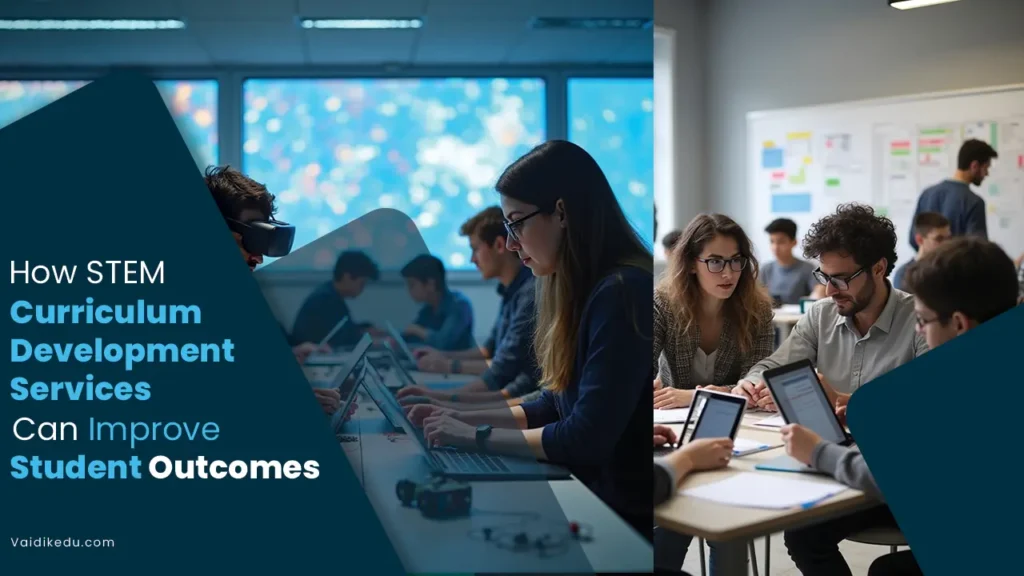STEM stands for Science, Technology, Engineering, and Math. A STEM curriculum is an educational approach that integrates these four disciplines as an integrated learning experience. The aim of STEM education is to encourage students in applying critical thinking, creativity, and problem-solving skills to real-world challenges.
What Are STEM Curriculum Development Services
1. The STEM structure Program denotes programs, creation, creation, and uses of doctrine and use that are focused on science, technology, technology, and accounting (STEM) often, literary experts, editorial experts, editorial experts, editorial experts, editorial experts Counselors, or organizational organization.
2. The study program recommends regular comprehension, regular, and compliance with a portion of the Stem system that is in harmony with educational and educational influence. It often combines the world’s activities, problems, and employees.
3. Planning out for educational materials such as study systems, staff, stuff, the internet, and multimedia that fit the study programs.
4. Teachers training and the development of workers: It means that teachers will provide knowledge and ordinance to make the matter better during the study. This may be part of offices, meetings, or training.
5. Organizes (classical and supervisory) to search for the understanding and knowledge of students in Stem. These can be questions, work, tests, or research.
6. To fill STEM courses to meet the specific requirements of students, schools or districts. It can be tailored to changes in the unit, special education students, or the relevant culture.
7. The integration of technology into the curriculum, such as interactive software, code, or high-throughput simulation.
Student Assessment and Assessment and Educational Change.
The purpose of this project is for the critic to care about the students, creating, and the STEM areas to nurture the problem solving skills of the STEM areas, and prepare the future trajectory of advanced students.
How Can STEM Curriculum Development Services Improve Students Outcomes
STEM curriculum development services can significantly improve students’ outcomes by providing a structured, engaging, and comprehensive learning experience that enhances their understanding, skills, and interest in Science, Technology, Engineering, and Mathematics. Here are several ways these services can have a positive impact:
1. Enhanced Engagement And Motivation:
- Real-World Application: Almost a real problem is hands-on art in the STEM curriculum. How students relate can see the importance of everyday life and the future.
- Interactive Teaching: STEM-centric teaching strategies, such as project-based learning, collaboration, technology skills and active participation, increase student motivation.
2. Improved Critical Thinking And Problem-Solving Skills:
- Inquiry-Based Learning: STEM curricula often emphasize inquiry and exploration, where students ask questions, experiment, and investigate solutions, fostering strong analytical and problem-solving skills.
- Integration Across Disciplines: The interdisciplinary nature of STEM helps students make connections between different fields and learn to apply knowledge in diverse contexts, promoting critical thinking.
3. Hands-on, Practical Learning:
- Experiential Learning: STEM programs frequently include laboratory experiments, engineering challenges, coding exercises, and other hands-on activities that allow students to apply theoretical knowledge in practical settings.
- Technology integration: Students get to work with current technologies, which not only makes learning more interactive but also prepares them for future careers that demand proficiency with tools and software.
4. Personalized Learning And Differentiation:
- Tailored Content: Effective STEM curriculum development services can adapt learning materials to different student needs, whether for advanced learners, those with special needs, or students at various academic levels. This helps to make sure that all students are appropriately challenged and supported.
- Pacing And Progression: With personalized curricula, teachers can offer differentiated instruction, ensuring that students learn at their own pace and receive the necessary support to master concepts.
5. Collaboration And Teamwork Skills:
- Group Projects And Collaborative Learning: Many STEM curricula emphasize collaboration, as many real-world STEM problems require teamwork. This fosters communication, collaboration, and leadership skills.
- Exposure To Diverse Perspectives: Working in teams also allows students to learn from others, fostering a cooperative mindset and encouraging diversity in problem-solving approaches.
6. Increased STEM Literacy:
- Foundational Knowledge And Skills: A well-developed STEM curriculum ensures students build a solid foundation in math, science, and technology. This improves their ability to understand complex concepts and engage with STEM topics more deeply.
- Preparation For Future Careers: With a focus on relevant, industry-driven knowledge, students are better prepared for future careers in STEM fields, equipping them with skills in high demand in the workforce.
7. Development of Soft Skills:
- Creativity And Innovation: STEM education encourages innovation and creative problem solving. As students engage with open-ended tasks, they learn to think creatively, test new ideas, and find novel solutions.
- Adaptability And Resilience: As students face challenges and setbacks in hands-on STEM activities, they learn perseverance and adaptability, key traits for success in any field.
8. Increased Student Achievement:
- Clear Learning Objectives: A well-organized STEM curriculum includes clear, measurable learning outcomes that help guide both instruction and assessment. This clarity ensures that students understand expectations and can focus on achieving specific academic goals.
- Frequent Assessment And Feedback: Regular assessments, along with feedback and reflection, help students track their progress and identify areas of improvement, ultimately enhancing their academic performance.
9. Support For Teachers:
- Professional Development: STEM Curriculum Development Services often include teacher training, which equips educators with the knowledge and skills to effectively deliver the curriculum. Teachers are better able to facilitate learning, manage classrooms, and support diverse student needs.
- Ongoing Resources And Support: These services often provide ongoing resources, lesson plans, and tools, helping teachers stay updated on best practices and ensuring they are well-prepared for delivering engaging and effective lessons.
10. Promotes Lifelong Learning:
- Instills A Growth Mindset: A STEM-focused education emphasizes continuous learning, where mistakes are viewed as part of the learning process. This helps students develop a growth mindset, encouraging them to embrace challenges and see learning as an ongoing journey.
- Cultivates Curiosity: STEM curricula encourage students to be curious and ask questions, fostering a lifelong love for learning and intellectual exploration.
By improving engagement, developing key skills, offering real-world relevance, and preparing students for future academic and career opportunities, STEM Curriculum Development Services can have a transformative impact on students’ outcomes.
Frequently Asked Questions
Long-term benefits include stronger analytical and problem-solving skills, greater preparedness for future careers in STEM fields, and enhanced abilities in innovation and critical thinking. Students are also more likely to develop a passion for learning and pursue further education or professional opportunities in high-demand STEM sectors.
Yes, STEM curriculum development services often emphasize differentiation and inclusivity, ensuring that learning activities are accessible to all students, including those with special education needs or varying levels of academic ability. Adaptive teaching strategies, flexible pacing, and supportive resources allow every student to engage with and succeed in STEM subjects.
Yes, STEM curricula provide students with relevant skills and knowledge needed for careers in fields like engineering, technology, healthcare, and research. By exposing students to industry tools, technologies, and real-world problems, STEM education prepares them for a competitive job market.
In addition to academic skills, STEM education develops important soft skills such as creativity, innovation, flexibility, and resilience. By solving complex, open-ended problems, students learn to think creatively and develop the flexibility necessary to adapt to new challenges.
STEM curriculum development services can tailor learning materials and activities to meet the needs of diverse student groups, from advanced learners to those requiring additional support. Differentiated instruction and pacing help ensure that every student can progress at their own speed and receive the appropriate level of challenge and assistance.









